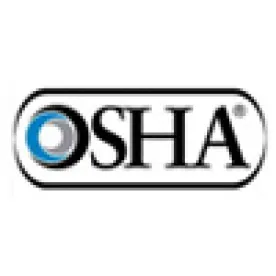1) OSHA has issued a comprehensive document "Guidance on Preparing Workplaces for COVID-19."
That Guidance categorizes employers under "Very High Risk," "High Risk," "Medium Risk," and "Lower Risk," categories. The employer should first determine under which category the employer falls. Then the employer should further review the Guidance to determine which "engineering," "administrative," "work practice," and "Personal Protective Equipment" (PPE) measures apply to their company and implement those measures, called "controls" by OSHA. One control is the erection of physical barriers, such as plastic sheeting to cordon off certain areas from the free flow of air typically in the hallways.
2) Many employers wonder if coronavirus cases are recordable on their 300 logs. Coronavirus, COVID-19, is not an exception to the OSHA Recordkeeping rule. Therefore, if the coronavirus, COVID-19, diagnosis is confirmed, is work related, and results in treatment beyond first aid, lost time, modified duty, or other recordable circumstance, then it is recordable, and needs to be recorded as an illness on the OSHA 300 log. If a work-related COVID-19 case for an employee results in in-patient hospitalization, then it is reportable within 24 hours of that in-patient hospitalization to the OSHA Area Office or the national OSHA line.
3) The EEOC has issued guidance that employers in this situation are allowed to take the temperatures of incoming employees. Typically taking the temperature of an employee is considered a medical examination that must be justified by business necessity. In the current pandemic situation, employers who test all employees coming to work each day have the business necessity of the pandemic to justify that examination. Employers should take the temperature of all employees if that will be the employer's practice, a control to protect other employees in the manufacturing plant or construction site.
4) Also, when using respiratory protection as PPE, the employer must either implement a respiratory protection program with mandatory fit testing, medical evaluation, training on usage and storage, and sufficient facilities for cleaning and storage. Or, if the employer considers the program voluntary, the employer must provide each employee with Appendix D to inform the employees of the uses and limitations of certain types of masks. OSHA has issued temporary guidance during the pandemic to relax the annual fit testing requirement, but the temporary guidance requires the employer to follow stringent measures, such as:
- Perform initial fit tests for each HCP with the same model, style, and size respirator that the worker will be required to wear for protection against COVID-19 (initial fit testing is essential to determine if the respirator properly fits the worker and is capable of providing the expected level of protection), and give workers training on the suspension of annual fit testing to preserve respirators, and then explain the importance of the user seal check, then nevertheless to conduct a fit test if there are visual changes in the employee's physical condition to affect the seal, and other training.
- Click here to see the complete guidance before seeking to employ any such suspension, rigorously follow the criteria listed in the publication.
OSHA is out inspecting workplaces and issuing citations. Be very careful about the use of respirators by your workforce without having the proper program, or, in a voluntary situation, providing the Appendix D.




 />i
/>i

